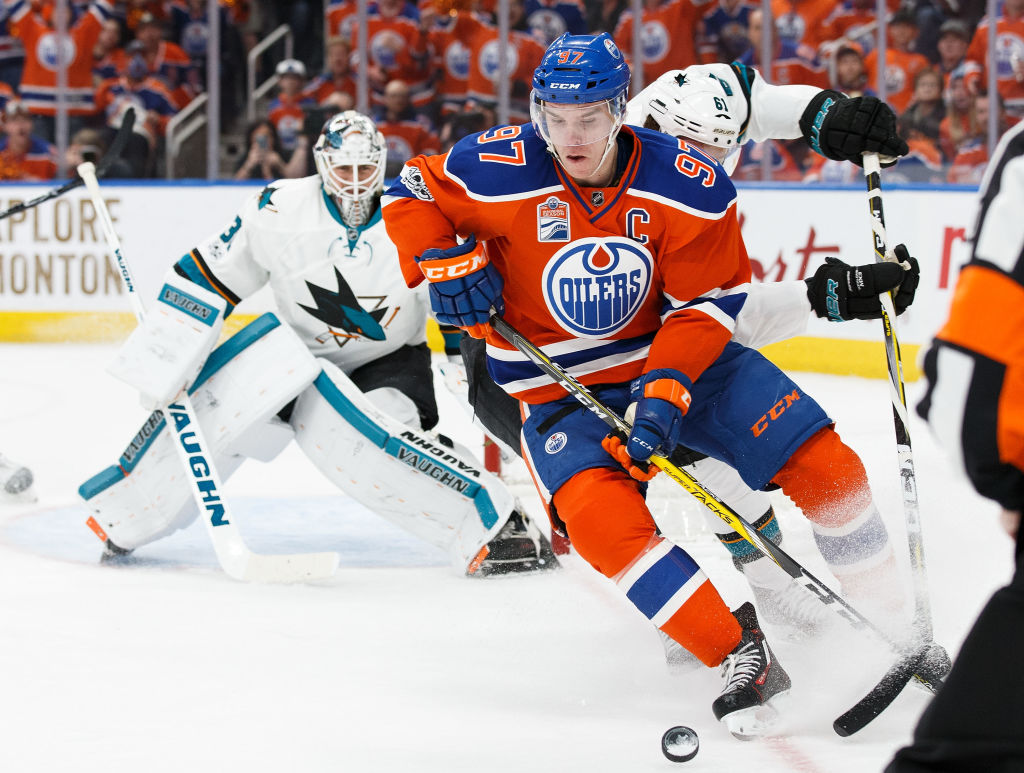On Friday, hockey twitter was abuzz because of an article that ranked teams based on the “star points” they had in their lineups. Dom Luszczyszyn (of The Hockey News, LeafsNation, The Athletic and elsewhere) used a metric called Game Score that measures single-game productivity using a combination of factors. Game Score is not a hockey stat, but was ripped from both baseball and basketball in order to fill a void in player comparisons. Game Score ranks individual performances on a per game basis, and the more elite players in the league have higher average GS numbers than non-elite players. While GS doesn’t necessarily account for things like quality of competition, it seems to be a reasonable (though incomplete) measure of how good a player is in a single game; when averaged with other single games over an extended period of time, there’s a correlation between ‘good’ players and their rankings on this metric.
What is Game Score Anyway?
The original Game Score article does a good job of breaking down the stat and talks about why the methodology is limited, if not flawed. But those limitations shouldn’t take away from the overall idea: that players who typically have good games will continue to have good games and those who don’t won’t. That’s not to say that a player who is in Tier 5 or below can’t play above that ranking, or that a Tier 1 player can’t have a slump, but it does say that over time, good player will be at the top of the ranking.
In single-game stats, former Oiler Sam Gagner has the highest Game Score (7.1) since 2007. Gagner is by no means an elite NHL talent, but his 8 point night in 2012 against Chicago stands out as the single best individual game in the last 10 years. Averaged with all his other games, Gagner probably gets a tiny bump from that big night, but one great night doesn’t make him an outlier, much like a couple bad outings for a bone fide star won’t significantly drop their rankings.
Game Score vs Star Points

Star points are simple: it’s a weighted sum of the number of tiered players a team has in its lineup.
To rank the players, there’s a 5-tier system, based on how good each player is relative to others in the league and on their teams. This matters because someone who is the third leading scorer on a particular team may really only be a Tier 4 player when the numbers are actually crunched.
For Oiler fans, the controversy was this: Only Connor McDavid (GS 1.31), Leon Draisaitl (GS 0.86) and Oscar Klefbom (GS 0.65) made the list. Cam Talbot is nowhere to be seen, and neither is everyone’s second favourite Swedish defenceman Adam Larsson. Andrej Sekera missed the list too and the Oilers are below the ‘championship cutoff’, so it’s obvious that Dom hates the Oilers, right?
Well, not quite. Generally speaking, a team’s fanbase overvalues the majority of its players while fans and media from elsewhere tend to undervalue due to lack of exposure. (See all the debate about Kris Russell as an example of this.)
While being the first to acknowledge that there are some surprises in his findings, he’s pretty confident that the rankings (which are predictive for next year and not reactive from last season) will be fairly accurate. The backlash came, unsurprisingly, from Edmonton MSM (notably including TSNs Dustin Neilson who not only disagreed with the rankings but boldly claimed that he didn’t need to think critically about his own opinion) and a cadre of fans who are quick to dismiss analytics of any kind as hokum, even though there might be some truth to what the numbers say.
What Does It All Mean?
All this means is that the Oilers maybe (just maybe) aren’t quite as good as fans would like to think. There are still some holes in the roster that need to be filled, and if Leon Draisaitl’s contract negotiations stall the Oil will only have Connor and Klefbom to rely on as having star power. Obviously hockey is a team game, and there’s danger in applying an individual metric like this to team numbers. Looking at the rosters of other teams, however, it’s a lot harder to dismiss this as garbage. The New Jersey Devils have exactly one star and a bunch of complementary players. The Vancouver Canucks (who are a real NHL team and not an expansion team) have none. The Nashville Predators, on the other hand, have the most star power in the league and are likely to make another deep playoff run next season.
What this information tells us is that while the Oilers aren’t a one line team anymore, there are still some complementary pieces needing to be added in order to push the team above that championship threshhold.
Add The Sports Daily to your Google News Feed!








